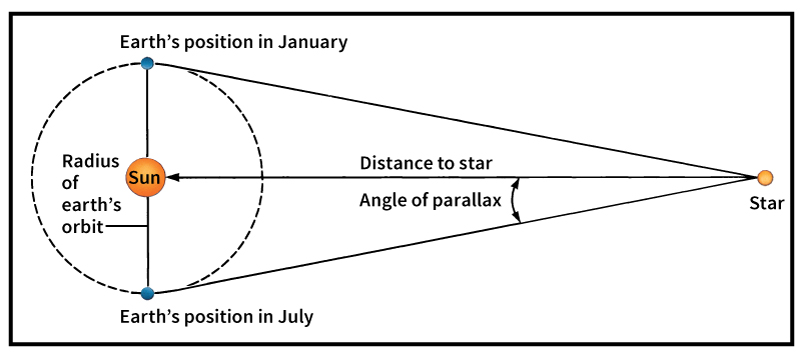Parallax, << PAR uh laks, >> is the difference in direction of an object when seen from two positions that are not in a direct line with each other and the object. Hold up one finger. Look at it first with one eye and then with the other. Notice how the finger seems to change position in relation to more distant objects when seen with one eye and then with the other.
When you look with two eyes, each eye sees nearby things from a slightly different direction. Your mind solves a parallax problem when you look at nearby objects, and you tell how far away they are. A person blind in one eye has no parallax vision, and may have difficulty judging the distance of nearby objects.
Parallax is used in surveying to tell how far away a distant object is. A base line of known length is laid off, the far-off object is viewed from each end of this base line, and the two angles with the base line are noted. Knowing the length of the base line and the number of degrees in the angles at each end, the height of the triangle can be solved by trigonometry.
Parallax is used in astronomy for finding the distance to the stars. For a base line, astronomers use the distance across the entire orbit of the earth around the sun, which is 186 million miles (299 million kilometers) long. But the stars are so far away that this base line is big enough to get the parallax only of some of the nearer stars. The parallax of the star nearest the sun, Proxima Centauri, is only 1/5000 of a degree.

